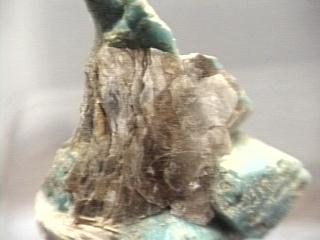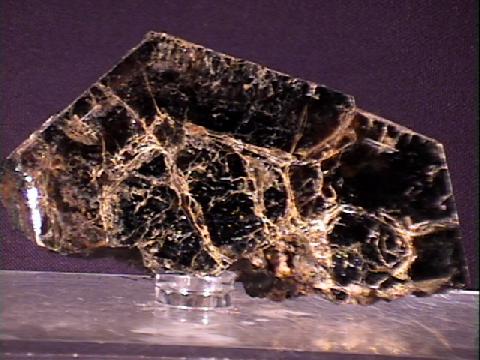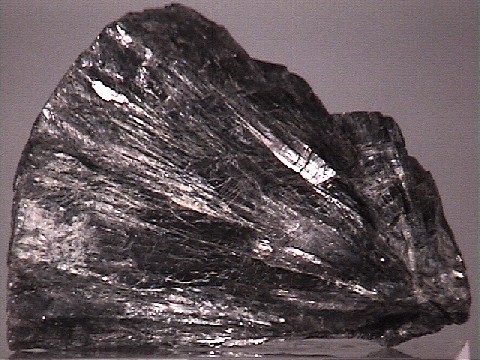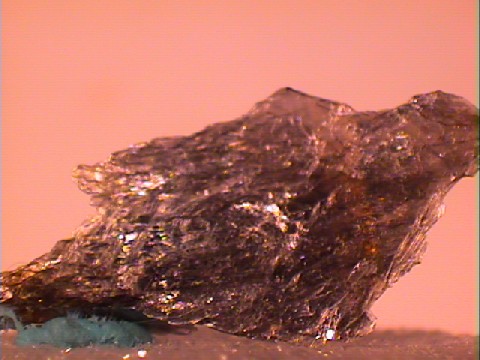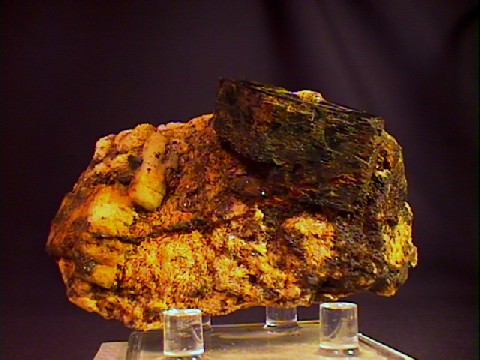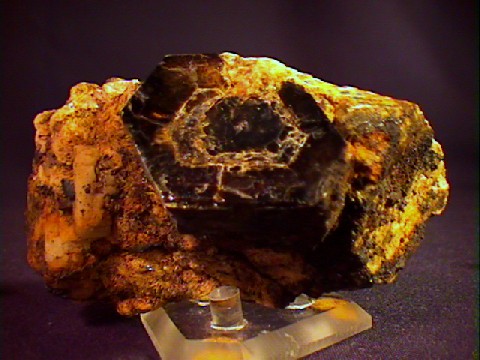 THE MINERAL ZINNWALDITE
THE MINERAL ZINNWALDITE
- Chemistry: K Li Fe Al (AlSi3 ) O10 (OH, F)2, Potassium lithium iron aluminum silicate hydroxide fluoride.
- Class: Silicates
- Subclass: Phyllosilicates
- Group: Micas
- Uses: mineral specimens and limited use as electrical and heat insulator for industrial purposes.
- Specimens
Zinnwaldite is a very rare member of the mica group and is not well known even by mineral collectors.
Zinnwaldite is darker colored than typical muscovite but lighter than phlogopite or biotite
The dark color and density in the three iron containing micas increase with an increase in the iron and magnesium content.
Zinnwaldite is difficult to distinguish from the other micas at least by ordinary methods and lacallity and enviroment are keys to identification.
It is limited to special granites and their pegmatites.
Zinnwaldite, like other micas, has a layered structure of lithium iron aluminum silicate sheets weakly bonded together by layers of potassium ions.
These potassium ion layers produce the perfect cleavage.
Zinnwaldite is rarely available to collectors but some nice specimens with apatite are now on the market showing nice tabular crystals.
PHYSICAL CHARACTERISTICS:
- Color is pale brown to gray and even green.
- Luster is vitreous to pearly.
- Transparency crystals are transparent to translucent.
- Crystal System is monoclinic; 2/m
- Crystal Habits include mostly tabular crystals with a prominant pinacoid termination.
Zinnwaldite's four prism faces and two pinacoid faces form pseudo-hexagonal crystal "books".
The sides of the crystal often tend to tapper
Also as lamellar or granular rock forming masses.
- Cleavage is perfect in one direction producing thin sheets or flakes.
- Fracture is not readily observed due to cleavage but is uneven.
- Hardness is 2.5 - 3.
- Specific Gravity is approximately 2.9 - 3.2+ (average to slightly above average)
- Streak is white.
- Associated Minerals are quartz, apatite, feldspars and tin minerals.
- Other Characteristics: cleavage sheets are flexible and elastic, meaning they can be bent and will flex back to original shape.
Thin flakes show an asterism or six rayed star when a light source is viewed through the crystal due to inclusions.
- Notable Occurrences include Cornwall, England; Germany and San Diego, California.
- Best Field Indicators are crystal habit, color, cleavage, elastic sheets, enviroments and associations.
 THE MINERAL ZINNWALDITE
THE MINERAL ZINNWALDITE
